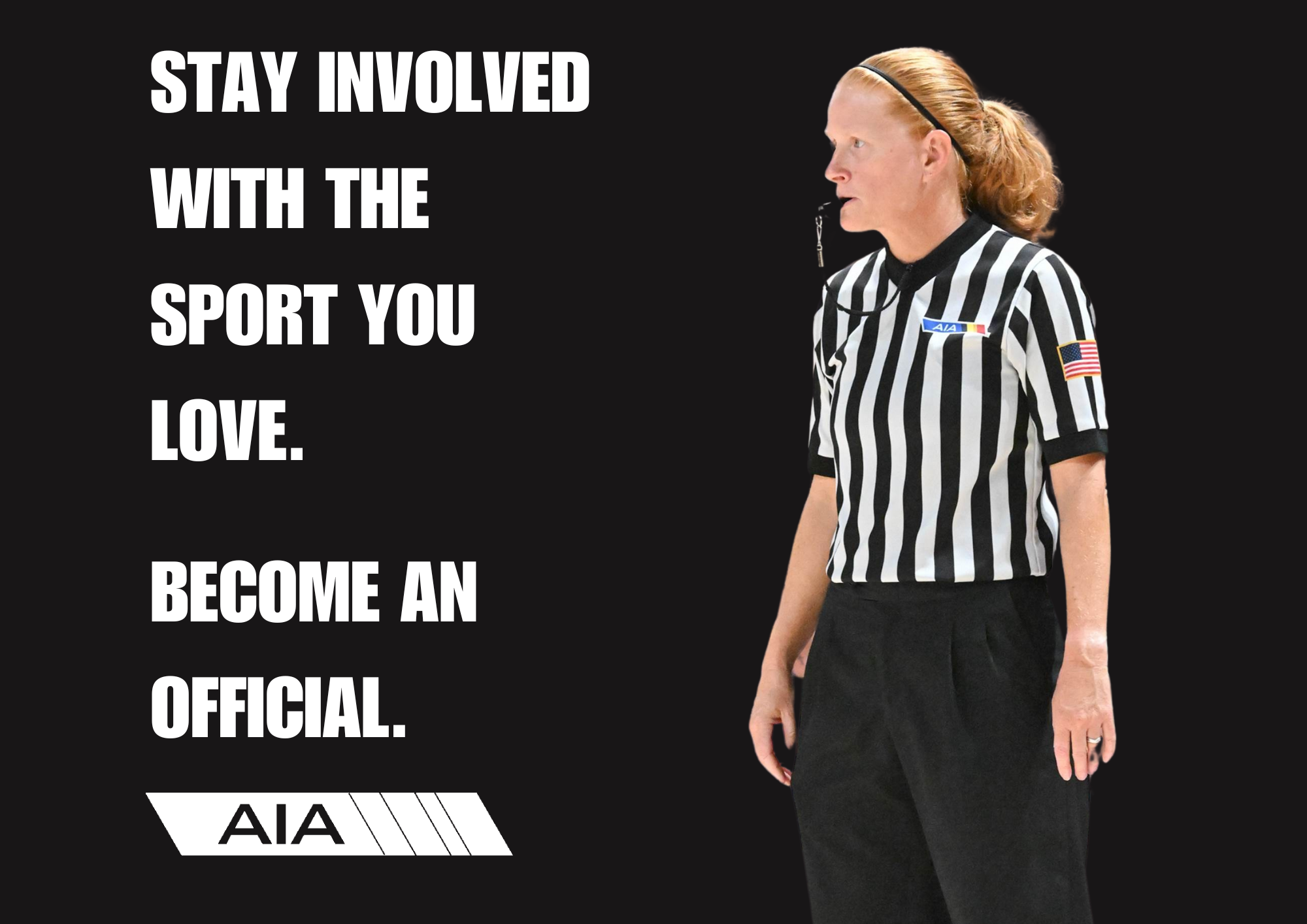How Title IX affected AIA official Montgomery
October 23, 2021 by Seth Polansky, AZPreps365

Trailbazing legislation known as Title IX was passed on June 23, 1972, which prohibits discrimination based on sex in educational programs or activities that receive federal financial assistance. It was the catalyst for bringing girls athletics in high schools to the forefront. As we celebrate the 50th anniversary of this momentus occasion, the AIA will produce a feature on the 23rd of every month on a female that paved the way for girls athletics in Arizona.
I was going into my senior year of high school when Title IX was adopted in 1972, so the actual passage of the law didn’t affect me much back then. In my early twenties, I started officiating amateur sports, an avocation I took up because I wanted to be a sportscaster and needed to learn about the games I’d never played. I started with ice hockey and moved on to baseball, football, basketball, and soccer. During that time, I rarely met any other women. The officiating ranks were decidedly male. Over the next 40 years, I continued officiating, sticking primarily to football and baseball. Since these are sports generally played by men and boys, again I rarely encountered other women.
However, during that time, I became a teacher. I spent 20 years in a Title I high school classroom teaching journalism and communications skills. And it was there that I began to understand the true importance of Title IX, which, in reality, has nothing to do with sports. The purpose of the law is to give girls a chance in the real world, the same leg up male athletes have always had.
It’s important to understand that the benefits of Title IX have nothing to do with becoming a professional or Olympic athlete or even earning a college scholarship. By participating in sports, young people learn important life skills that will help ease their way into the business world, as well as make them more well-rounded citizens.
Business owners are delighted to hire those who've been on teams. They know athletes understand punctuality, working with others toward a common goal, following rules, and getting back up when you’ve been knocked down. All valuable business skills. A case in point: 94% of C-suite women—those with executive-level management positions—have played sports. Prior to Title IX, girls had few opportunities to acquire these skills. In 1972, just 1 in 27 girls participated in high school sports. According to the Women’s Sports Foundation, today it’s 2 in 5.
While the purpose of Title IX was to give girls equal access to sports and activities that were available to boys, we are still not there, though the numbers have vastly improved. In the 1970s only 300,000 girls played sports. During the 2018-19 school year that figure jumped to 3.5 million. Girls now account for 43% of all high school athletes.
There’s no denying that Title IX has opened up the world for girls and young women. This idea was driven home to me in a high school football game here in Arizona in 2019, one that would be my last. I’d refereed the entire evening without once realizing that two players on the visiting team were girls. As the players were shaking hands at the end of the game, I asked to meet them. A photographer was on hand and I requested that he take a picture of the three of us.
One of the young ladies turned to me and said, “Do you know why we play football, ma’am?”
I shook my head.
“It’s so other girls know they can play too.”
Here is where I’ll admit that I cried, though I managed to wipe my tears away before the photographer took the picture.
The opportunities are there, thanks to Title IX. Now, if we could just get more women to pick up a whistle.
Previous Features:
- September: Sr. Lynn Winsor (Xavier College Prep)


